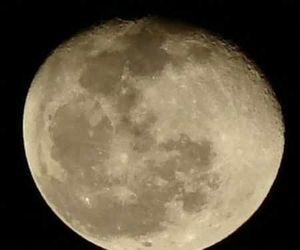The sky at night: May
Ron Iremonger looks up to the month ahead

 Ron Iremonger looks up to the month ahead
Ron Iremonger looks up to the month ahead
There is a Full Moon on May 9 and a New Moon on the 24th. The Full Moon is almost too bright to view through binoculars or a telescope, it is best observed around 1st Quarter on the 1st or 31st.
Observing with a magnification of 100, on a night when our own atmosphere is steady, you are getting the same view that the Apollo astronauts had when passing just 2,500 miles above the lunar surface!
At the very start of this month the planet Mercury ends its superb evening appearance and can be found low down in the north west 40 minutes after sunset. By the end, Venus rises almost two hours before the Sun, its brilliance making unmistakeable images.
On the 21st, at 4am, Venus and the crescent Moon will be five degrees apart. Mars is not a good object to observe at the moment but it can be found in the constellation of Pisces. Saturn is still a rewarding evening object just below the constellation of Leo; the planet's ring system is currently tilted four degrees to the south and will slowly close up before disappearing from view in a few months time.
When a planet lies on the opposite side of the Earth from the Sun and in line with them, it is said to be at opposition and it is usually the best time to observe the planet. Jupiter is moving closer to opposition and its apparent diameter is increasing, from the beginning to the end of the month it will have become about 10 per cent bigger. Just after midnight on the 28th, Jupiter and Neptune come together; the two giant planets will appear less than half a degree apart, such conjunctions are rare. Jupiter's orbital period around the Sun is 12 years so miss this encounter and you will have to wait until 2022!
High up and due south you will find the constellation of Leo, the stars forming the head appear as the "Sickle" asterism; at the base of the Sickle is Leo's brightest star Regulus. Just behind Leo, to the west, is the dim constellation of Cancer but within its bounds is a jewel, the open star cluster M44 also known as the Beehive or Praesepe.
Given a dark sky site, for those of you with keen eyesight, M44 is readily visible to the naked eye as a fuzzy patch; a pair of 10 x 50 binoculars will reveal the Beehive's full beauty, a swarm of stars.
On the 5th, there is a favourable peak of the eta Aquarids (shooting stars). These meteors are associated with debris from comet Halley; the expected 35 meteors an hour may well be material from the comet spread out along its orbit.





